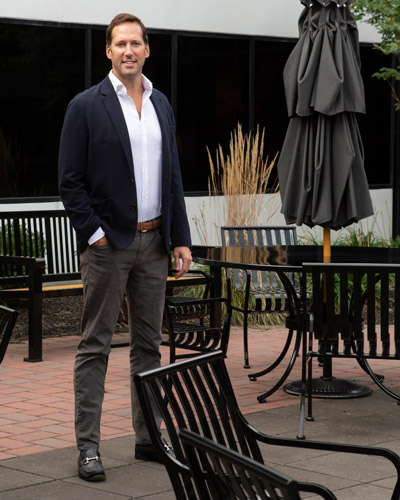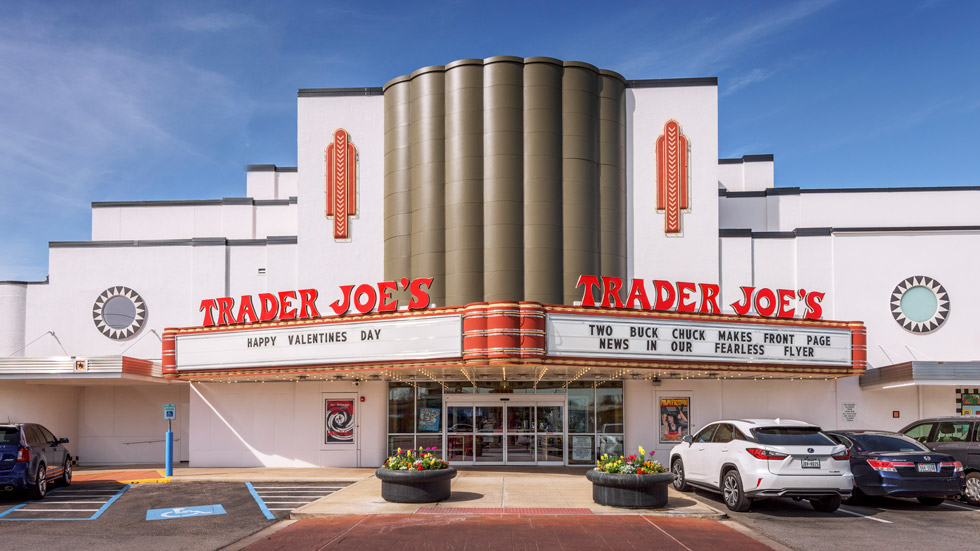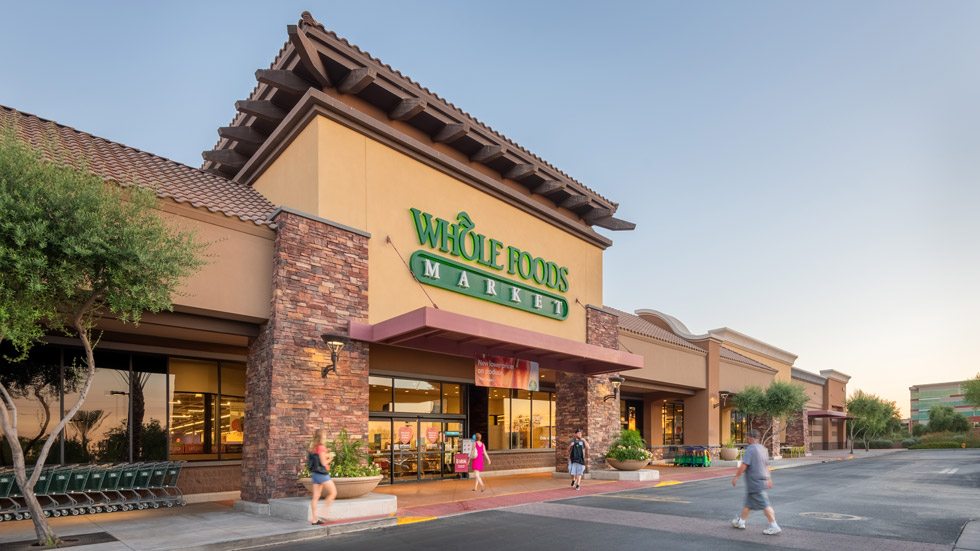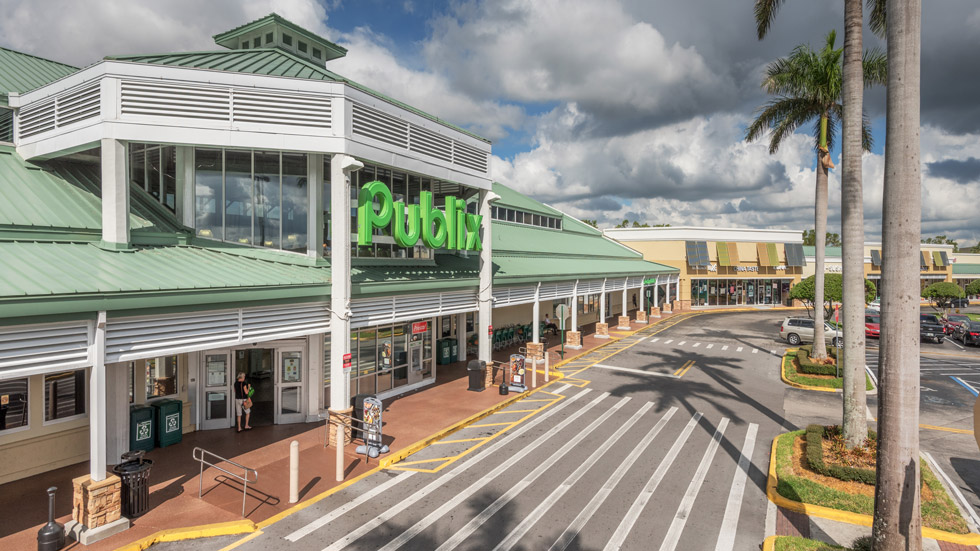Thirty years after its IPO, Kimco Realty is proving the enduring viability and appeal of open-air shopping centers.
Kimco Realty Corp. (NYSE: KIM) has more to celebrate this year than its 30th anniversary as a publicly listed REIT. Eighteen months after the onset of COVID-19, rent collection is approaching pre-pandemic levels, foot traffic has bounced back, leasing activity is at an all-time high, and a recent merger brings new opportunities.
Jericho, New York-based shopping center REIT Kimco, one of North America’s largest publicly traded owners and operators of open-air, grocery-anchored shopping centers and mixed-use assets, just got bigger after completing a substantial merger with fellow shopping center REIT Weingarten Realty Investors. The merger created a 559-property portfolio with 100 million square feet of gross leasable area.
Open-air, grocery-anchored centers have been one of the better performing sectors of commercial real estate during the COVID crisis, as consumers hurried to grocers and drugstores to stock up on essential supplies. Open-air formats also offer consumers safer, social-distancing shopping.
More retailers are shifting from enclosed centers to open-air formats, which remained open even during the peak of COVID when many other centers closed. Additionally, open air offers tenants services like curbside pickup and more space for outdoor dining.
The grocery sector in particular has thrived and proven a saving grace for retail REITs. As people were in lockdown and online shopping accelerated, grocery-anchored centers became last mile fulfillment centers near where people live and work. Last mile logistics is all about getting online orders to consumers’ doorsteps as quickly and efficiently as possible.
“The silver lining of the pandemic is physical stores have never been so important,” says Kimco CEO Conor Flynn. “If you were going to bet against brick-and-mortar retail, you would think a pandemic would probably put a nail in the coffin. But what happened was last mile, grocery-anchored retail really had a boom because it’s delivering the essential goods and services to the consumer who lives by the asset,” he adds.
Accelerated Trends
Flynn says many best-in-class retailers were already adopting an omnichannel approach pre-pandemic, and COVID accelerated that trend. Many of Kimco’s anchor tenants are financially strong companies with solid e-commerce platforms including Target, Walmart, Costco, Whole Foods, and Albertsons, in which Kimco is a strategic investor.
Although operators of grocery-anchored centers benefited from essential retailers like grocers, drugstores, and home goods retailers, that doesn’t mean they haven’t struggled with rent collections.
Indeed, Kimco wasn’t spared from the negative impacts of the health and economic crisis. Many tenants requested rent relief, deferrals, or lease modifications. For example, Kimco collected 70% of rents in the second quarter of 2020.
“We definitely had our fair share of arm wrestling matches with people who elected not to pay,” Flynn says. “We had to use our relationships with big national retailers to say, ‘Hey, you guys have big balance sheets. You have the ability and wherewithal to pay your rent so we can help the small, mom-and-pop businesses that don’t have the balance sheets and capital to weather the storm.’”
Kimco launched a tenant assistance program to help tenants find and apply for federal and state loans to help their businesses during the pandemic. The efforts clearly paid off given Kimco’s healthy fundamentals today, enabling it to carry out the Weingarten merger.
Merger of REIT Pioneers
Kimco paid approximately $5.9 billion, including $3.9 billion in cash and stock for Weingarten, creating a company with a pro forma enterprise value of roughly $20.5 billion. The combined company’s pro forma equity market capitalization is around $12 billion.
The transaction brings together two of the oldest and biggest operators of U.S. retail centers with complementary portfolios and deep-rooted histories.
Kimco was founded by Martin Kimmel and Milton Cooper, and Cooper today serves as Kimco’s executive chairman. The two met in the late 1950s when Cooper was a real estate attorney and Kimmel was a developer. They formed a partnership, thus the name “Kim-co.” Cooper started with one retail center anchored by a Zayre discount store. When he had the chance to do more development, he called Kimmel, who had expertise in construction.
“He was in Los Angeles, and I was in New York,” Cooper recalls. “I called him and said, ‘I have these projects. Would you be interested in being a partner with me?’ He said, “I’ll be on the next plane.’” A handshake closed the deal.
Cooper, a past chair of Nareit, was involved in growing Kimco for decades, including taking the company public in 1991. (See sidebar). He stepped down as chief executive in 2001.
Weingarten, meanwhile, was founded in 1948 when Joseph Weingarten started building stores to expand the grocery business of his father, Harris Weingarten. Joseph Weingarten eventually developed centers focused on grocers, discount stores, and drugstores.
Stanford Alexander, a past chair of Nareit, joined the realty business in the 1950s and later led the company’s move to go public and then later become a REIT.
Over the past decade, Kimco sold hundreds of properties, divesting from Canada and Mexico to focus solely on the U.S. Prior to the merger, Kimco owned interests in roughly 400 shopping centers and mixed-use assets, primarily in major U.S. metro markets.
Richard Hill, head of U.S. commercial real estate research at Morgan Stanley, gives Kimco credit for restructuring its portfolio. “There was a time not too long ago where we were underweight Kimco. That was primarily because they were divesting a lot of assets and spending a lot of money redeveloping existing assets, which we thought created execution risks and was pressuring free cash flow as a result,” Hill says. “We turned overweight about a year ago because they have done a remarkable job of transforming their portfolio.”
And not only that, Kimco has virtually completed all its capital expenditure projects, Hill notes. “They’ve done a really good job transforming their portfolio and de-risking their balance sheet, and we see a much more certain growth profile going forward.”
Meanwhile, Weingarten owned 162 properties in the Sun Belt markets and across the Western U.S. The merger bolsters Kimco’s footprint in the fast growing Sun Belt markets. The combined company expects to benefit from increased scale and density in markets like Atlanta, Phoenix, Houston, Orlando, and Miami.
“Weingarten grew the portfolio that really focused on the markets that we love—the high barrier-to-entry, high-growth Sun Belt markets that we believe have a lot of room for growth,” Flynn says.
Good Timing
Kimco and Weingarten had previously talked about merging their portfolios, but Flynn says the timing was right in 2021. The open-air, grocery-anchored retail centers not only outperformed during COVID but provided last mile locations as both shopping destinations and omnichannel fulfillment centers. “Suddenly, the game has changed because the value of the store is not just the four walls; it’s servicing the customer in multiple ways,” Flynn says.
Kimco recognizes that retail is changing post-pandemic, and it must deliver convenient solutions that consumers want including online shopping, in-store and curbside pickup, and home delivery—all while utilizing the physical store as the logistics hub. Kimco launched curbside pickup early during COVID and had it installed at all sites shortly thereafter.
Kimco also saw a rebound starting in its own Sun Belt portfolio, driving the merger. “We saw leasing activity ramping up, and that gave us a lot of confidence to say, ‘Hey, now’s the time to really try and make this strategic merger happen,” Flynn says. “We saw the momentum and thought, ‘If the timing is right for Weingarten, it might be a wonderful time to catch the upswing as a combined entity with obviously a bigger balance sheet.’ ”
Analysts agree that the merger is a prudent move. “It’s undeniable, from our perspective, that the merger enhances the quality of the portfolio,” Hill says. “We’re giving Kimco the benefit of the doubt that they can grow faster than their peers post-Weingarten acquisition.”
Fernanda Hernandez, analyst at S&P Global, says “one of the strengths that really highlights our view of Kimco is the quality of its portfolio, and the portfolio’s resiliency has become even more evident during COVID.”
Kimco’s open-air centers with their specific focus on grocery-anchored tenants with strong credit quality are some of the distinctions, Hernandez explains. “Of course, we did see some disruption and cash flow volatility during COVID, but the pace of recovery we’re seeing speaks to the quality of the portfolio, which is going to be even further strengthened by the recent merger with Weingarten.”
Hernandez says S&P Global has observed consistency in Kimco’s financials, financial policy, and the measures it took to preserve liquidity and financial health on the balance sheet during the pandemic.
Beating Expectations
Kimco reported strong second quarter earnings, beating expectations. It posted funds from operations (FFO) of 34 cents per share, topping estimates of 31 cents. Kimco raised the guidance for earnings and FFO for 2021, saying operations returned to pre-pandemic levels quicker than originally projected. “Our raised outlook also reflects our confidence that the upcoming merger with Weingarten will create additional value for our shareholders,” Flynn notes.
Meanwhile, Kimco’s leasing activity has accelerated. Flynn says the healthy leasing market reflects the reopening of the economy and rush by tenants to capture market share in high quality locations. “The combination of a five-year low of vacates and a 10-year high of new leasing volumes created a pretty significant upswing in our occupancy, providing a nice tailwind for the future,” Flynn says.
Kimco’s occupancy at the end of the second quarter was 93.95%. The company signed 333 leases totaling 1.8 million square feet during the second quarter and expects $33 million in future cash flow from newly signed leases. Grocery, off-price, home improvement, home goods, hobby, and sporting are most active. Meanwhile, restaurants and fitness discounters are rebounding.
“A lot of disruption occurred in restaurants, fitness, and entertainment where some smaller chains and mom-and-pops closed for good,” Flynn says. “This created a lot of market share that’s up for grabs.”
Following the Weingarten merger, Kimco plans to look for redevelopment opportunities throughout the portfolio, including mixed-use projects and adding multifamily to existing properties where feasible.
“What Kimco’s calling card has become over the last five years is creating a world-class team that focuses on the highest and best use of our real estate,” Flynn says. “We look at where we can unlock significant value for our shareholders by adding density.”
Kimco has obtained entitlements for 5,000 apartment units that will complement its retail centers and create live/work/play environments. “We think we can take that platform and unlock a lot of value in the Weingarten portfolio,” Flynn says.
Future Playbook
“Obviously, the delta variant is a big wild card, but I don’t see us going back to a shutdown,” Flynn points out. “Now we have a playbook of how to manage and communicate through a pandemic, no matter how bad it gets.”
Flynn anticipates curbside pickup will continue to give shoppers more options and says most retailers are leaning into last mile retail.
“They want to make sure they utilize their stores in as many ways as possible to get that consumer ‘sticky,’ so they keep coming back,” Flynn says. “If you look at the earnings transcripts from any of our major retailers, one thing is consistent: They say their biggest game changer and competitive advantage against Amazon is their store.”
A Watershed Moment
In November 1991, Kimco Realty Corp. completed a REIT initial public offering (IPO). It was the first successful equity REIT IPO in many years.
The firm raised $128 million, relatively small by today’s standards. However, it marked the beginning of the Modern REIT Era. The strategy was led by Kimco co-founder Milton Cooper.
“Milton took the company public and started a wave of REIT IPOs that really followed in his footsteps,” says Kimco CEO Conor Flynn. “He’s credited as the founding father of today’s REIT industry.”
As recently as the 1980s, private investors dominated commercial real estate ownership. By the late 1980s, however, lenders closed up shop for most real estate projects following the S&L crisis. Kimco and other real estate companies were deeply in debt. Cooper needed access to capital and quickly.
“The capital was very temperamental. So, what we really were looking for was non-temperamental capital,” Cooper says. His solution was to take Kimco public and structure it as a REIT. However, it was “a very tough sell,” Cooper recalls. There was widespread industry skepticism of REITs at the time and a very small REIT market.
In fact, Kimco was advised by others against going public, but Cooper persisted and called Green Street, which saw potential for a public offering. Meanwhile, Richard Saltzman, who was the former head of Merrill Lynch’s real estate banking unit, and is now a board member for Kimco, stepped up to lead Kimco’s roadshow strategy.
“Because it was the time of the S&L crisis, everywhere we’d go, we’d hear, ‘Didn’t you guys ruin the S&L industry? Who are these dudes from New York and what are they doing?’” Cooper adds.
Additionally, the Securities and Exchange Commission (SEC) questioned how Kimco would pay its dividend and asked the company to prepare a chart, marking the beginning of the so-called “magic page.” The magic page is a projected growth story, describing how a new REIT will accomplish future expectations for funds from operations or funds available for distribution.
“We projected based on every lease we had signed. If something was pending, we didn’t put it in,” Cooper notes. “So our projections were very low, and afterwards, some of our investors gave us t-shirts that read, ‘Under-promised and Overperformed.’”
Following Kimco’s successful REIT IPO, dozens of real estate companies went public in 1993 and 1994, marking record growth. “It took some time, but REITs caught on,” Cooper says. “REITs are really the democratization of the ownership of real estate.”
Looking back, what’s Cooper most proud of? “I’m proud generally of Kimco’s culture, our people, of really following the Golden Rule, which is to treat others as you’d want to be treated,” he explains. “Compared to other industries, most REITs have management that have a stake in the business, and therefore, do the right thing,” Cooper notes. “They’re owners and entrepreneurs, and generally, treat the money as if it’s their own.”



